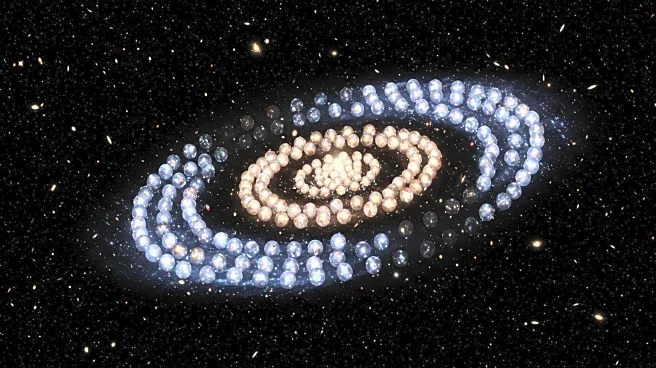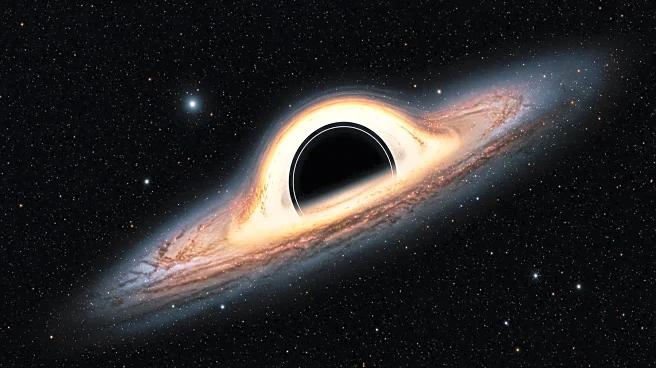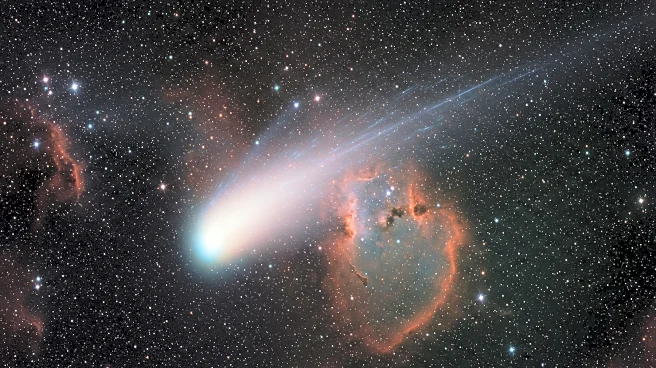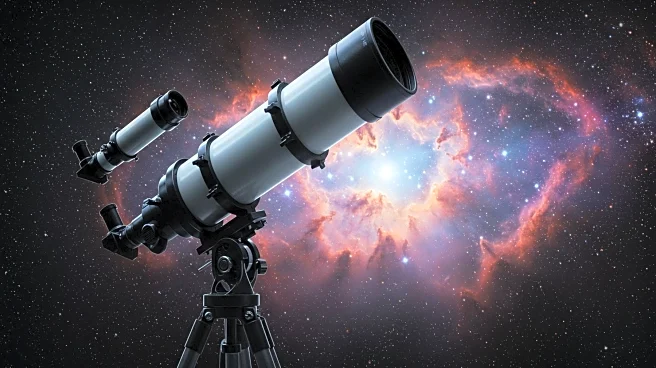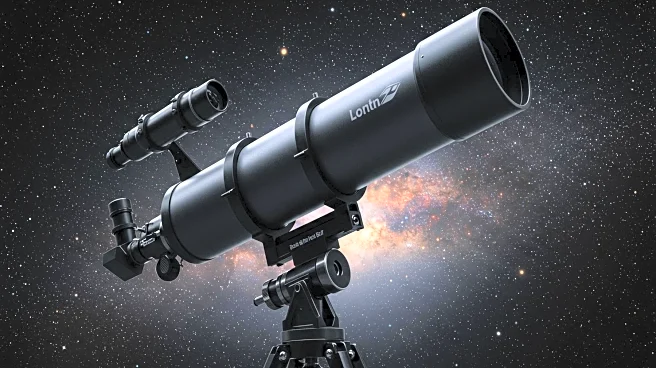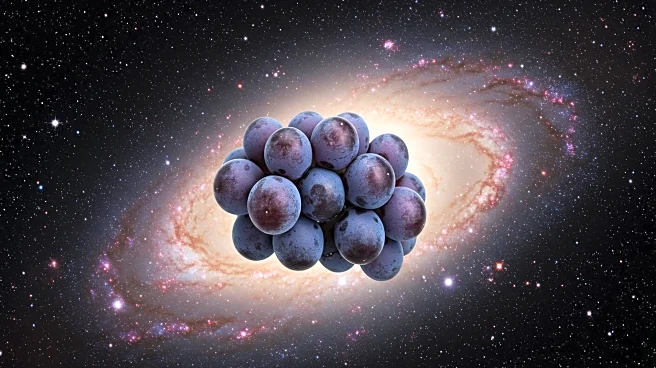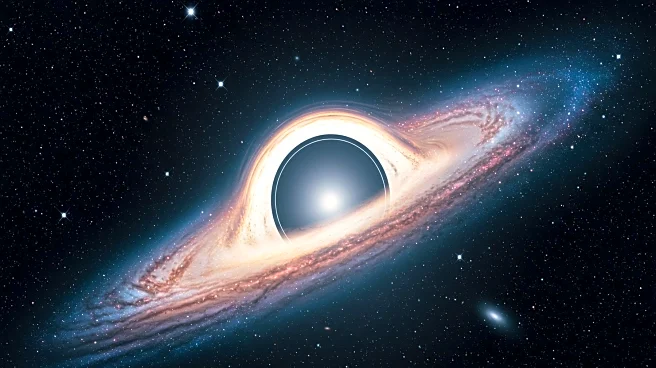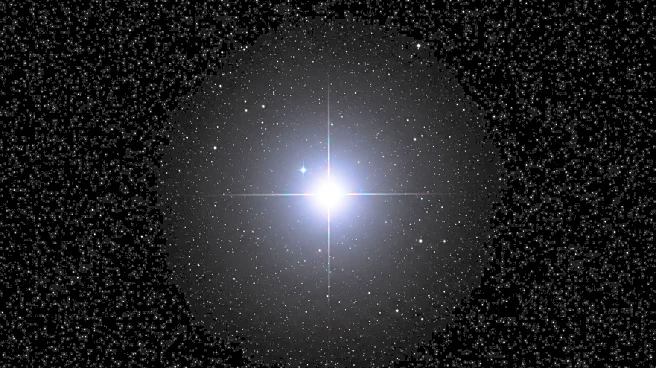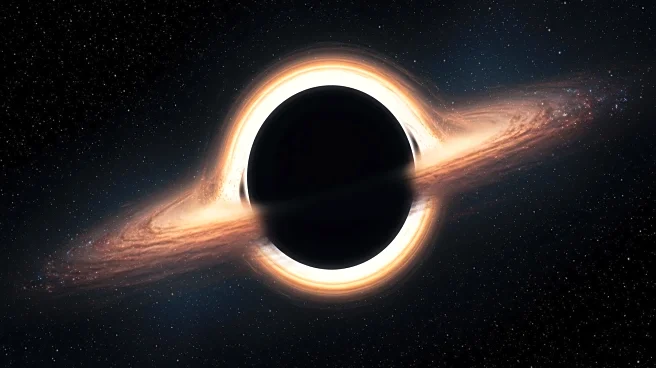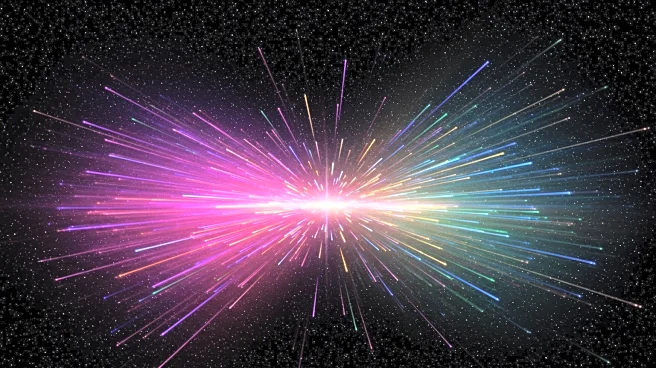What's Happening?
Astronomers have discovered 250 'mini galaxies' that could provide crucial insights into the nature of dark matter, a hypothetical substance believed to constitute a significant portion of the universe's mass and energy. These dwarf galaxies, which are unusually sensitive to the universe's underlying physics, offer a powerful means to test competing theories about the universe's structure and dark matter behavior across different scales. The discovery was made through the Identifying Dwarfs of MC Analog GalaxiEs (ID-MAGE) survey, which identified these hidden galaxies by analyzing deep-sky images. The survey focused on galaxies located between 13 and 33 million light-years away, expanding the search for hard-to-see satellites orbiting around low-mass dwarf galaxies. The findings highlight the potential of these systems to enhance understanding of galaxy evolution and serve as a testing ground for exploring dark matter's influence on their structure.
Why It's Important?
The discovery of these 'mini galaxies' is significant as it provides a unique opportunity to study the nature of dark matter and galaxy formation. Dwarf galaxies, due to their shallow gravitational potentials, are extremely sensitive to differences in cosmological and galaxy formation models, offering a range of testable predictions for galaxy formation. This research could lead to a better understanding of how galaxies form and evolve, and how dark matter influences their structure. The findings also align with predictions from current galaxy formation models, which suggest that larger galaxies tend to have more stars and satellite galaxies. By comparing these results with studies of larger galaxies like the Milky Way, scientists can gain fresh insights into how a galaxy's size affects its smaller companions, potentially leading to breakthroughs in understanding cosmic history and the universe's fundamental components.
What's Next?
Deep imaging and spectroscopic follow-up observations are underway to confirm and study the 355 satellite candidates identified in the survey. These observations are planned with major facilities worldwide, including the Green Bank Telescope, Gemini Observatory, and Large Binocular Telescope. The results from this follow-up campaign will be shared in future publications, potentially offering new insights into the nature of dark matter and galaxy formation. As scientists continue to explore these 'mini galaxies,' they may uncover further evidence supporting or challenging existing theories about the universe's structure and the role of dark matter, paving the way for new discoveries in astrophysics.
Beyond the Headlines
The discovery of these 'mini galaxies' not only tests the predictions of the Lambda cold dark matter (ΛCDM) model but also helps astronomers understand how structure builds up on the smallest cosmic scales. Detecting 'satellites of satellites' provides a deeper understanding of the hierarchical nature of galaxy formation and the influence of dark matter on these processes. This research could lead to long-term shifts in how scientists approach the study of dark matter and galaxy evolution, potentially influencing future astrophysical research and theories.
